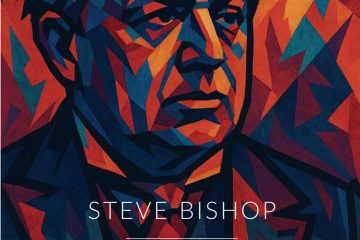Anne Boleyn (1500 – 1536) is famous because she was married for three years to Henry the 8th. We all know what happened to her. She didn’t die peacefully in old age. Her husband, Henry, was one of the most ruthless and tyrannical rulers in English history.
In a British poll a group of historical writers chose Henry as the worst monarch in history. Some historians have argued that he was responsible for the deaths of 70,000 people. Possibly an exaggeration? Many of his victims were completely innocent. He once had a cook boiled to death and the rack was a torture device that thrilled him. To be married to this tyrant was fraught with acute challenges.
Anne’s father, Sir Thomas Boleyn, was a respected nobleman. Her mother, Elizabeth Howard, was the daughter of Sir Thomas Howard, 2nd Duke of Norfolk, one of the most powerful men in the country. She spent her childhood at Hever Castle in Kent.
Her character and deeds are hotly contested. The Jesuit historian, Nicholas Sanders vilified her as a witch and a she-devil. His description of her includes these grotesque features: ‘a large wen under her chin’, a ‘projecting tooth’ and ‘six fingers’ on her left hand. It is highly unlikely that Henry would have married such an unattractive woman. Others have contended that she was a scheming, promiscuous seductress who manipulated Henry into marrying her. There is absolutely no evidence for these views. Indeed her many enemies concocted these baseless lies about her. In her excellent biography Anne Boleyn Joanna Denny presents Anne as a vivacious, witty, cultured and godly woman.
Granted she spent seven years living at the court of the debauched and highly promiscuous French king, Francis 1st but Anne was drawn to the pious, gracious and virtuous sister of Francis – Marguerite of Angoulême. This remarkable woman would later become the Queen of Navarre. Both Marguerite and Anne fully embraced the protestant way of understanding the Christian faith. They loved to read the Bible in the French language. Singing the psalms was a daily joy for both women. Anne was often found reading her French Bible. She reveled in her faith and was keen to share it with others.
Anne used her considerable power and influence as Queen (1533-1536) to rescue people accused of heresy like the Prior of Reading, who possessed Lutheran books, and Nicholas Bourbon de Vendoevre, the French poet. At this time heresy was understood as anything that supported the teachings of Martin Luther and William Tyndale. Anne was enthusiastic about Tyndale’s English New Testament and owned a copy of his The Obedience of a Christian Man. Courageously she persuaded her husband to read this book. At this time it was very dangerous to own any of these ‘heretical’ books by Tyndale.
According to William Latymer, an evangelical chaplain, Anne was very concerned for the poor and needy. She purchased fabric to be made into shirts, dresses and sheets for the destitute, urging her ladies to be busy doing this godly work. She gave each member of her household a book of Psalms in English. Anne even appointed evangelical chaplains to her household and influenced the election of bishops sympathetic to protestant perspectives.
She also supported protestant exiles and refugees from abroad. She saw herself as having been called by God to marry the king, just like Queen Esther in the Old Testament. This calling gave her a unique opportunity to spread the true gospel in England.
Like William Tyndale, Anne wanted everyone to be able to read the Bible in their own language. She believed passionately that the gospel begins with justification by grace and through faith. Good works follow on from this in gratitude to Jesus for His death and resurrection. In short we cannot earn God’s forgiveness. It is a precious gift.
What a contrast with her husband Henry. Henry was often in thrall to superstitious fears that lay at the heart of his understanding of the Christian faith. Like so many of his contemporaries he tried to appease God by performing all kinds of ‘good works’. These ‘merits’ could be earned by kissing relics, going on pilgrimages to shrines and buying costly indulgences from the Pope to save souls in purgatory.
Further to this, Henry attended Mass every day. Often he would pay no attention to the elaborate ceremony conducted in Latin. He was too busy chatting about jousting, ‘saucy wenches’ or tennis with his best friend Charles Brandon as he went through the motions. He viewed the Mass as some kind of protective talisman. A talisman is an object that is believed to act as a magical charm to ward off evil and bring good luck. There is no need to read and study the Bible if you possess the right talisman. Evangelicals like William Tyndale and Anne Boleyn regarded talismans and amulets as pagan superstitions. They would urge you to trust in Jesus and not in a magical ceremony.
As a good and pious Christian, Anne tried to convince Henry that these superstitious practices were rooted in fear and not in faith. She strived to convince her husband of the wonderful truths we find in the book of Ephesians.
For it is by grace you have been saved, through faith—and this is not from yourselves, it is the gift of God— not by works, so that no one can boast. For we are God’s handiwork, created in Christ Jesus to do good works, which God prepared in advance for us to do.
Ephesians 2:8-10
Her evangelistic outpourings did not reach Henry’s hard heart. They fell on stony ground. Although Anne did succeed in encouraging the reformed faith to flourish in England she was unable to convert Henry to the protestant faith. Later in their marriage Henry was to turn against her and the outcome was entirely predictable; Anne’s head was severed from her shoulders in 1536.
In such difficult and trying circumstances we can only admire this faithful and inspiring Christian woman.
- The Story of Fred Lemon who met Jesus and Two Angels in Prison - November 26, 2025
- The Inspiring Story of Abraham Kuyper (1837-1920) - October 22, 2025
- Fifteen False Prophets and Testing the Spirits - September 29, 2025



3 Comments
Tim · October 30, 2024 at 6:57 pm
On the button as usual, Mark. I am doing a lay reading course at the moment and keep trying to press home there is no such thing as neutral scholarship,
Cheers,
Tim
Roy · November 1, 2024 at 4:44 pm
Good one, Mark.
Anne Burghgraef · November 13, 2024 at 9:13 am
Thank you for challenging the many misrepresentations of Anne Boleyn’s character and faith, which happens far too often with women who are in public view.
Comments are closed.